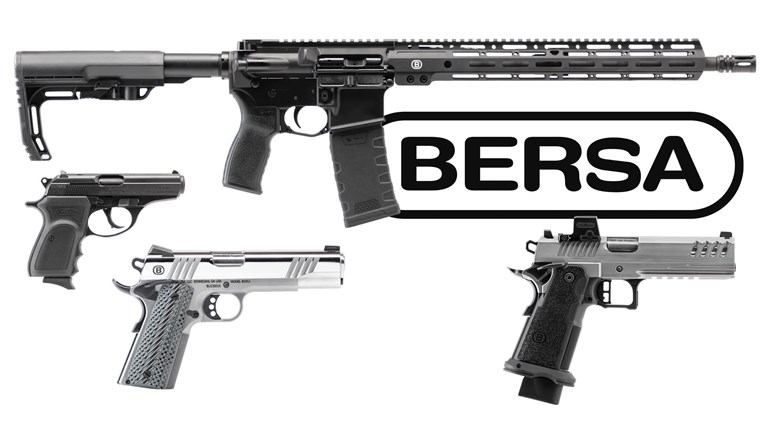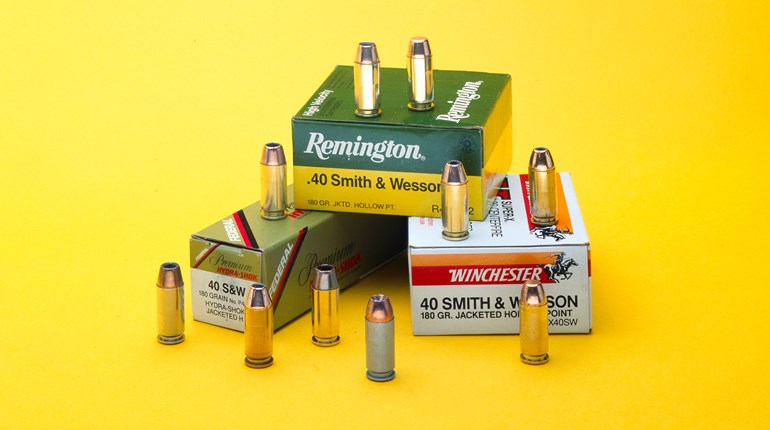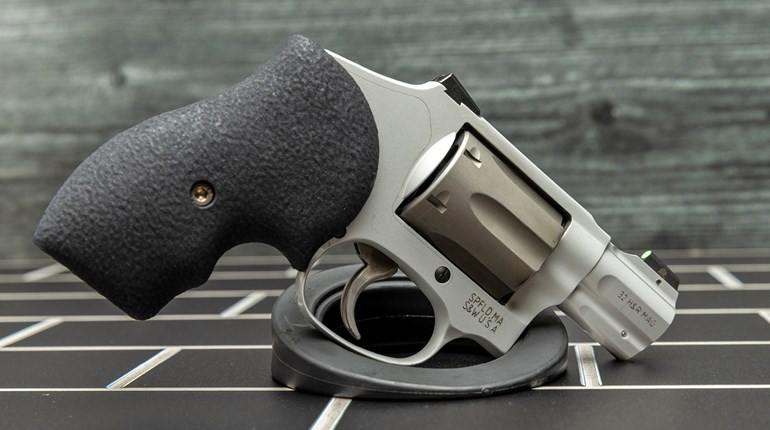
The necked-down .357 SIG cartridge allows for greater powder capacity than a straight-wall case of similar length behind a 9 mm projectile. That enables it to propel 125-grain bullets at velocities surpassing the .357 Mag.
SIG is the commonly used shorthand for SIG Sauer, the firearm-manufacturing company with Swiss and German roots. In recent times, the company has developed manufacturing facilities in the United States. Currently, it is producing the U.S. Armed Force’s service pistol. That is a tall order, as befits one of the largest gunmakers in the world. Although the company is relatively new to the American gun business, it is renowned for quality, so much that the use of the term SIG denotes both the company as a manufacturing entity and any product of that company. Any pistol made by the manufacturer is understandably referred to as a “SIG.” We are not primarily concerned with either the company or its guns, but rather its first effort at producing a cartridge.
The .357 SIG arrived on the market in 1994. Intended for use in police-service semi-auto pistols, the cartridge was first offered in the SIG P229 handgun. SAAMI specifications for the new round tell us the cartridge is 1.140 inches in overall length and has a .424-inch rim. To put it in a better context, the .357 SIG cartridge is based on either the 10 mm Auto or .40 S&W (depending on which reference you use). It is rimless, measuring .424 inch at case body and rim. But, it is also bottlenecked, and uses typical 9 mm projectiles. This seems slightly contradictory in that the 9 mm in the Imperial system is .355 inch. Calling the new round the .357 SIG and not .355 SIG was an effort to announce the competition with the thousands of .357 Mag. revolvers still in holsters in the late 1990s.
If you stand a .357 SIG cartridge on a table next to a .40 S&W, you’ll see that they are about the same length—so is the 9 mm. The .357 SIG and .40 S&W can use the same magazine, which holds slightly fewer rounds than the 9 mm. When you neck down the .40-caliber case to take 9 mm projectiles, you increase case capacity over the slimmer 9 mm case. That means more powder and more velocity. Usually, a semi-auto’s magazine holds 12 rounds in .40 S&W, and so does the magazine for the .357 SIG, while the 9 mm holds 15. If you’re a big-bullet guy, take the .40 S&W. If you opt for speed, there’s the .357 SIG. (Its smaller-diameter, lighter-weight bullet imparts less felt recoil, making faster follow-up shots quite possible.) At least theoretically, either is better than the 9 mm.
When the .357 SIG came along, it was not an overwhelming, overnight success, but several major state police departments began to issue them. Civilian use and respect for the cartridge has slowly escalated throughout the 26 years we have had it. But, I have the feeling that a great many shooters do not fully understand what an effective pistol cartridge the .357 SIG actually is. How does it match up with the grand ol’ wheelgun round called the .357 Mag.?
For a bunch of good reasons, the best bullet weight and style for the .357 SIG is a 125-grain hollowpoint. There have been a few slightly heavier bullets used, but most were—and still are—125-grainers. However, .357 Mag. ammunition comes in a much wider range of projectile weights, ranging from 100- to 200-grain loads. For defensive shooting, most people use some form of 125-grain JHP, which has more manageable recoil than the heavier loads.
I set up a shoot where I fired 10 different kinds of .357 SIG ammo against the same number of .357 Mag. loads. Barrel lengths were the same, and I allowed for the velocity loss at the revolver’s barrel/cylinder gap. It was an effort to determine cartridge velocity of two different cartridges in two typical guns chambered for those rounds; one revolver and one semi-auto. We got startling results: The .357 Mag. revolver average was 1,270 fps, while the .357 SIG averaged an impressive 1,350 fps.
The SIG outran the magnum! This does not mean the .357 SIG is somehow better than the .357 Mag., which is probably the most versatile handgun cartridge of them all. But, it does strongly suggest the SIG is an extremely strong competitor as a suitable defensive load. By the way, the calculated energy differential is 448 ft.-lbs. (.357 Mag.) of energy to 506 ft.-lbs. (.357 SIG).
The higher velocity of the SIG has other interesting consequences. From time to time, a police or military shooter encounters circumstances where he is forced to engage targets at much greater range than typical,and has only a pistol. With the .357 SIG, the higher velocity flattens out the ballistic curve to reduce the need for so-called “Kentucky elevation.” Also, you cannot ignore the reload advantage versus a typical revolver—12 rounds in a magazine over six in a speedloader.
I have never experienced or witnessed a malfunction with this cartridge. As the slide closes on a SIG, we have a 9 mm bullet headed into a .40-caliber chamber. It is not new. Some of the earliest practical semi-automatic pistols (C96 Mauser and P-08 Luger) were designed for bottlenecked cartridges and later modified for 9 mms. The Tokarev cartridge worked well in 1940s-era Soviet submachine guns, too.
I am fond of the cartridge, so much so that I would like to see my fellow shooters aware of the round’s appeal. I have wondered how it would work in a carbine, so I have one currently on a local gunsmith’s bench. The .357 SIG is indeed fightin’ iron.






































